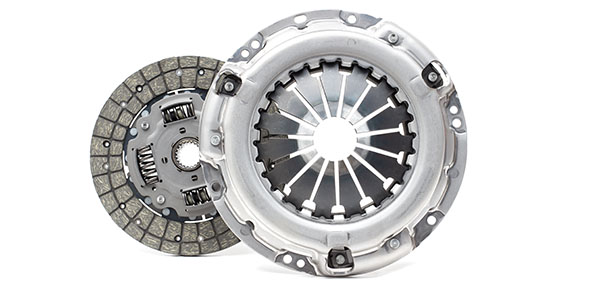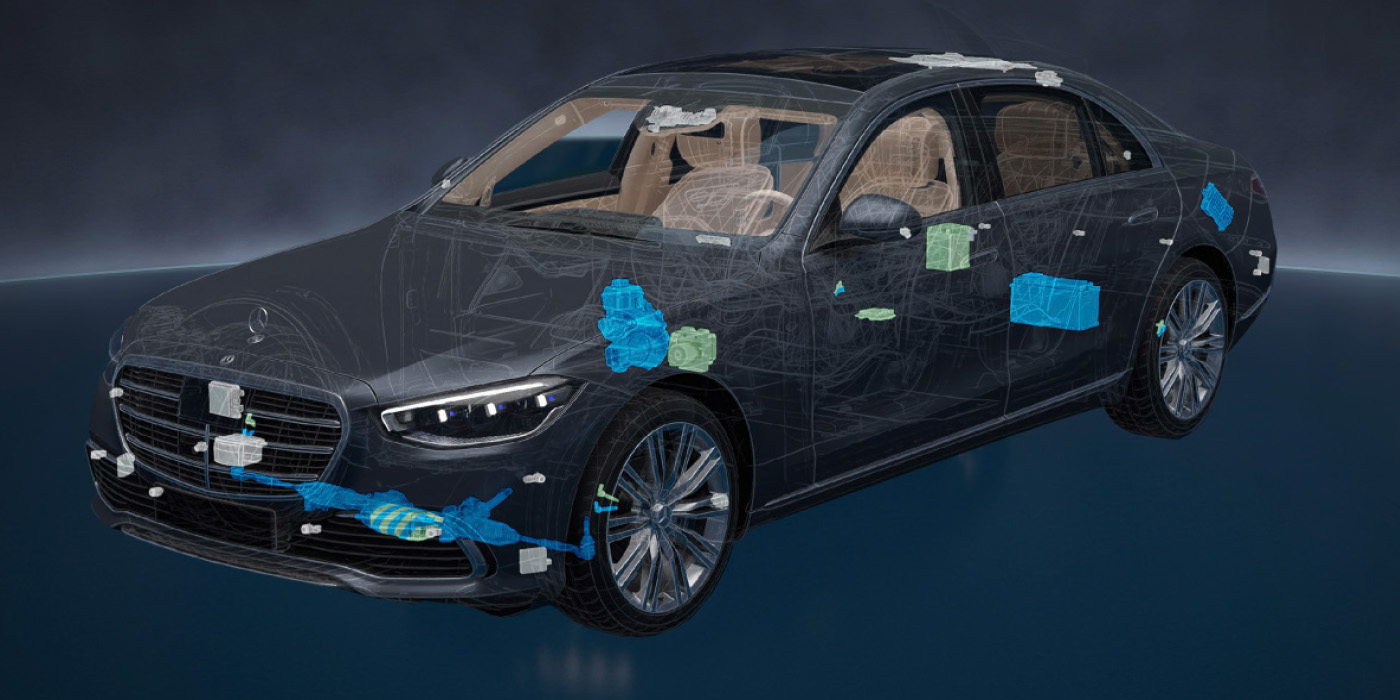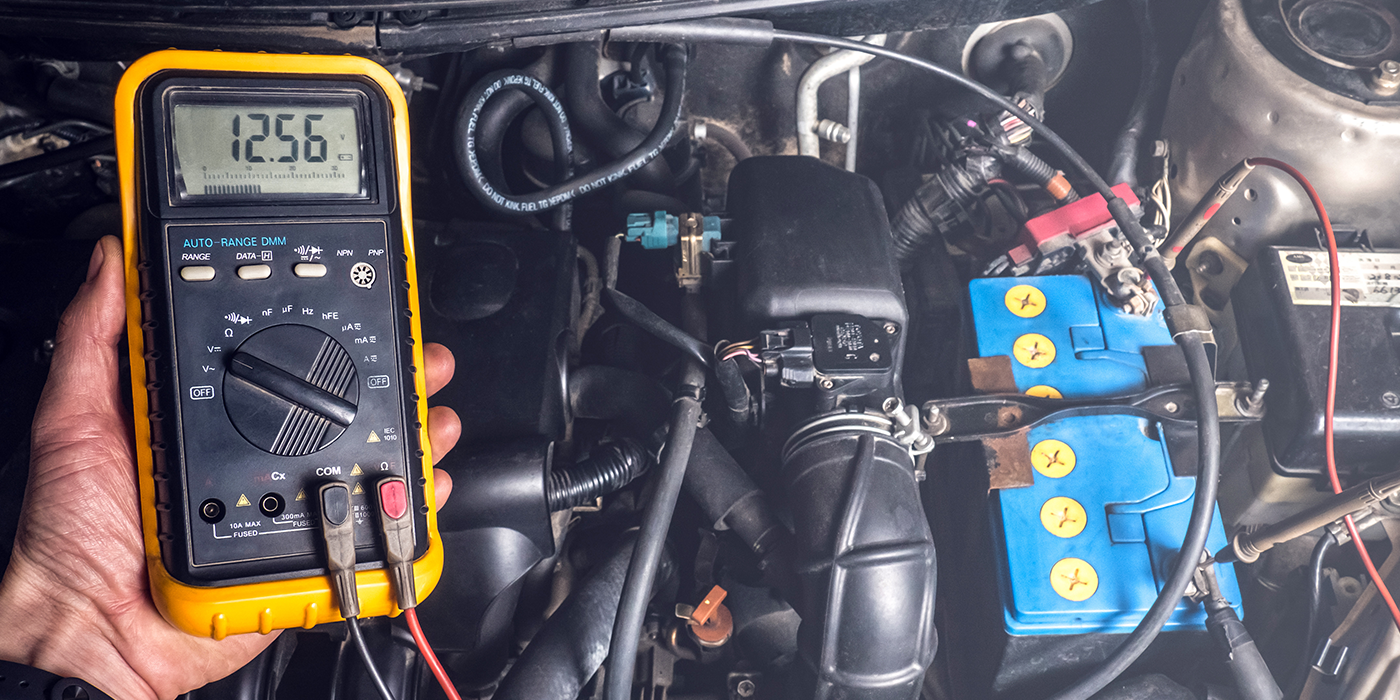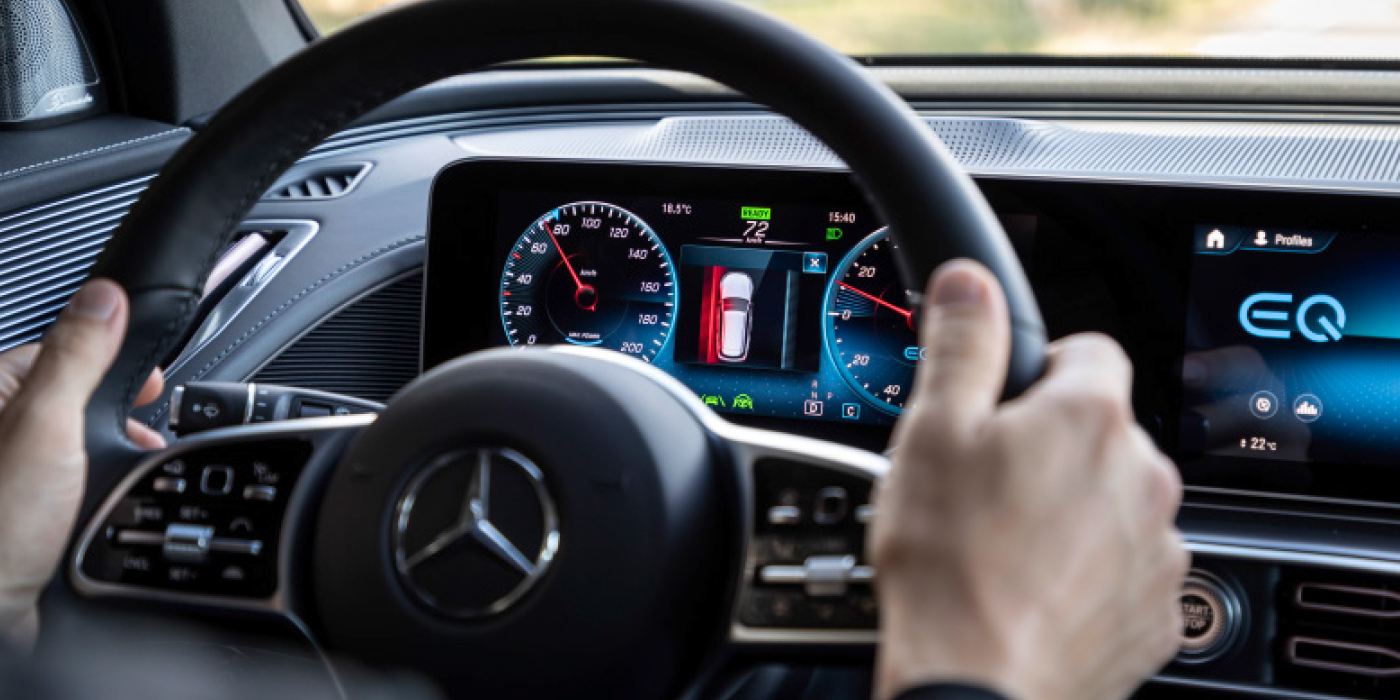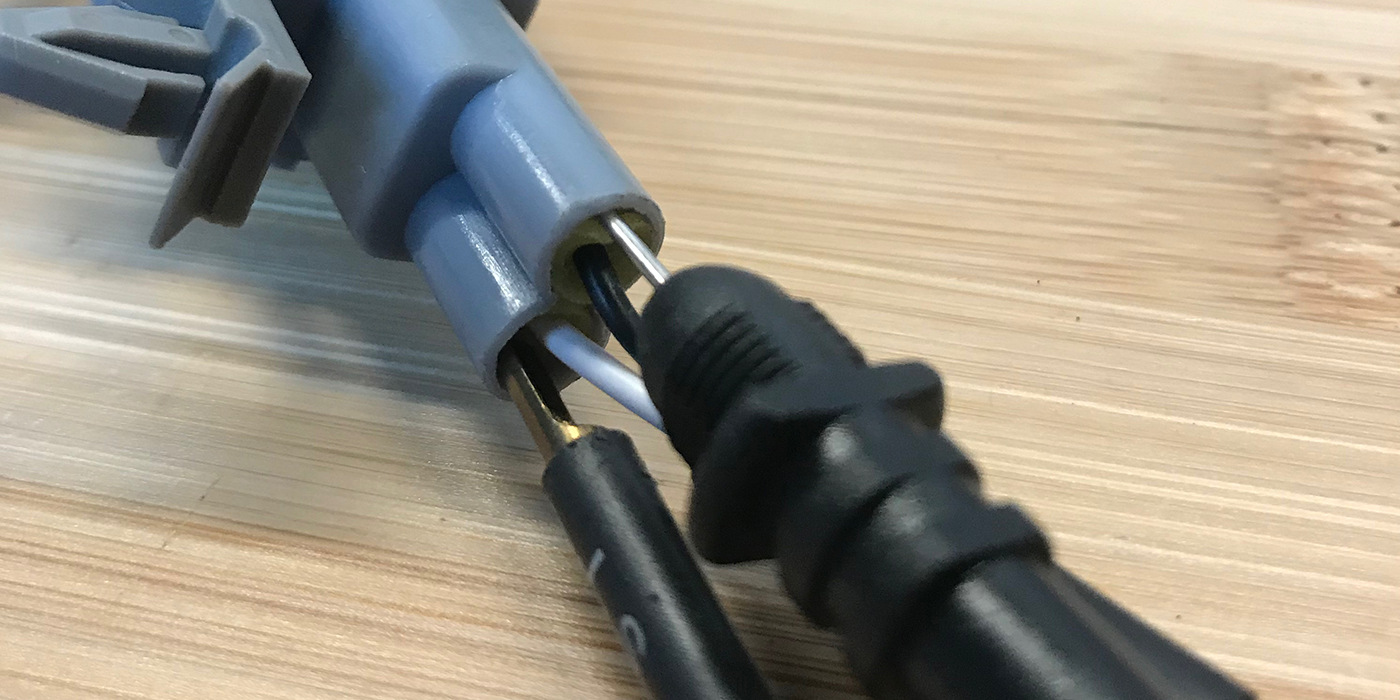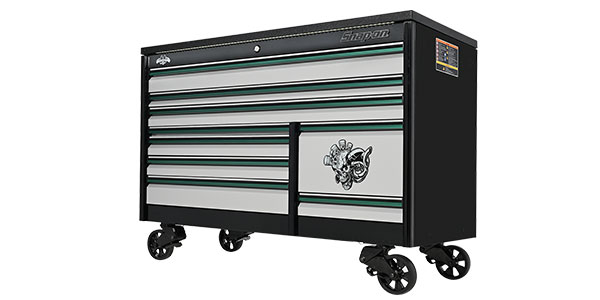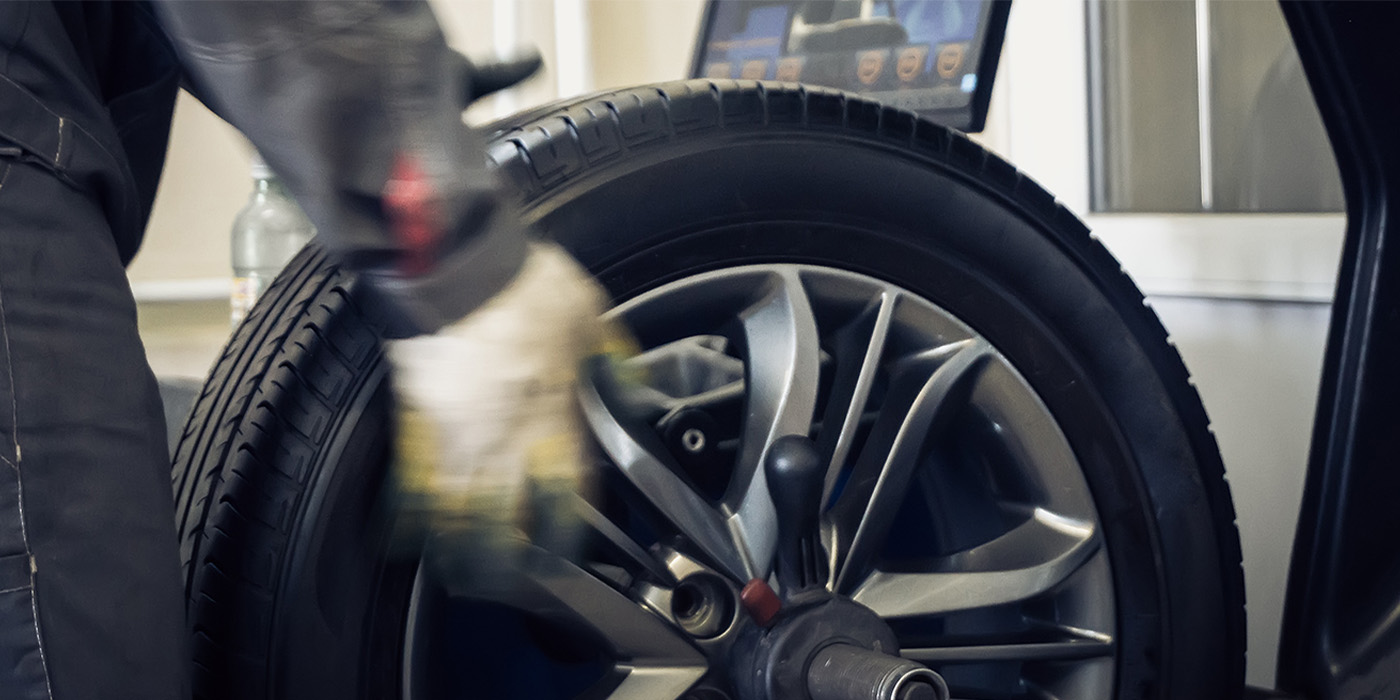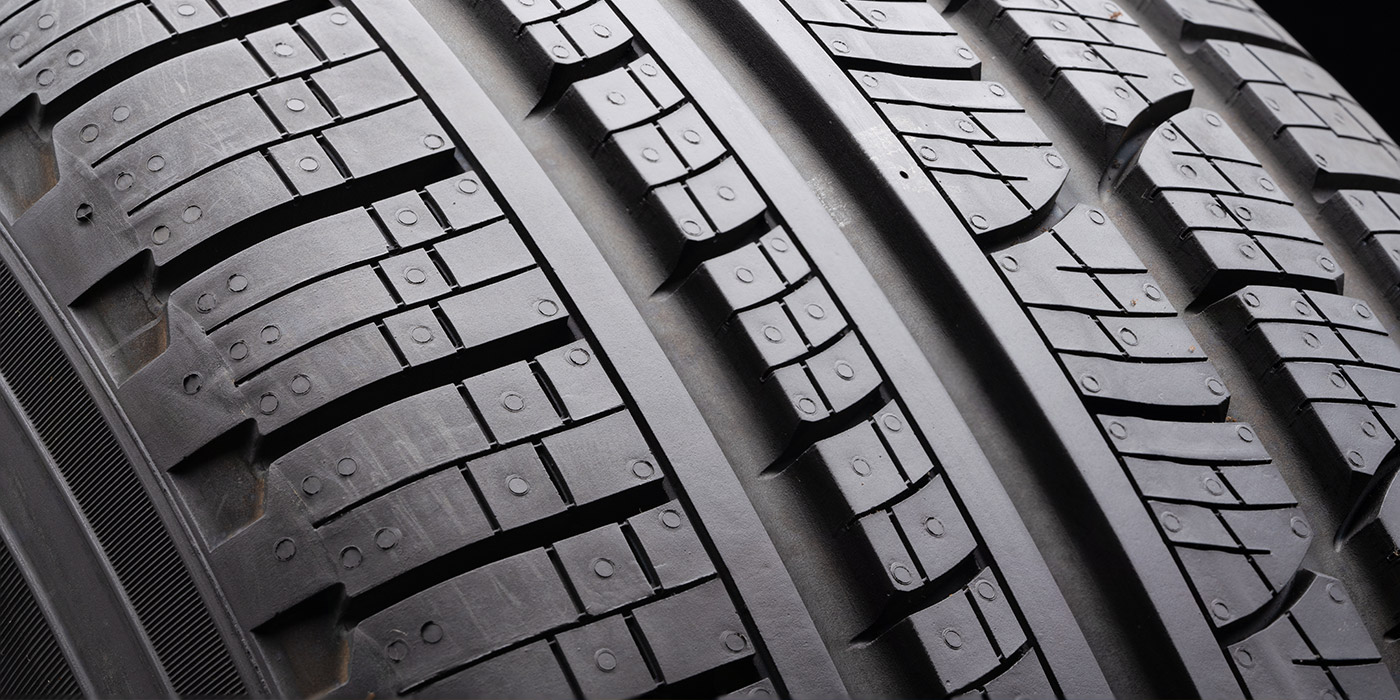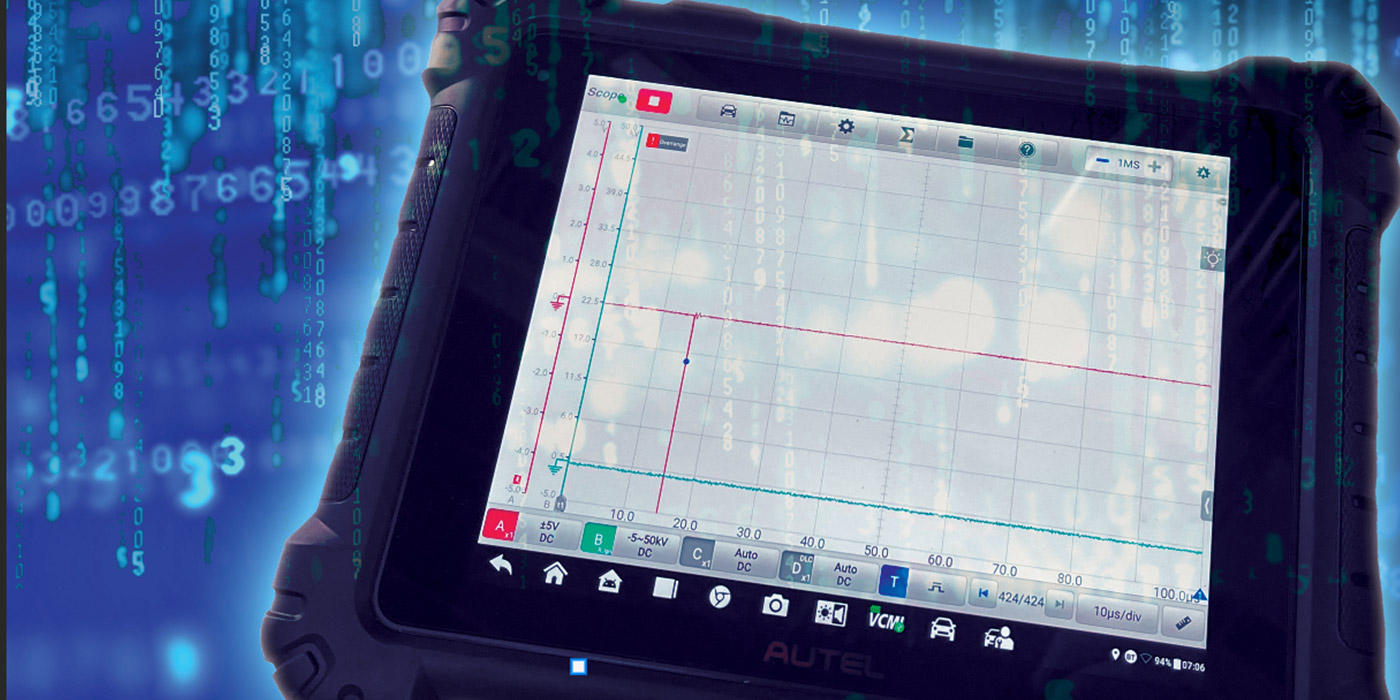
By Sergey Vorsin, Vasyl Postolovskyi and Olle Gladso, contributing writers and instructors at Riverland Technial and Community College in Albert Lea, MN
Vehicle: 2013 VW Jetta TDI 2.0.
Customer states that the vehicle will sometimes feel like it is falling flat on its face. When the accelerator is depressed, nothing happens and the engine is stuck at a fast idle.
A scan tool shows the following DTCs stored:
- P0633 – Key not programmed
- P0671 – Glow plug circuit cylinder #1 problem
- P0672 – Glow plug circuit cylinder #2 problem
- P0674 – Glow plug circuit cylinder #4 problem
- P0121 – Throttle/Pedal Position Sensor/Switch ‘A’ Circuit Range/Performance
Errors Р0633, Р0671, Р0672 and Р0674 do not relate to the customer’s problem. Work on these errors is postponed for the future. The only error pointing to the customer’s complaint is P0121 Throttle/Pedal Position Sensor/Switch ‘A’ Circuit Range/Performance.
This trouble code directly indicates the possible source of the failure: the accelerator pedal position. It may be a defective pedal position sensor, the wiring between the pedal position sensor and the engine control unit (ECU), the ECU itself or any number of external factors affecting ECU operation.
During testing, the problem does not manifest itself, the engine reacts to throttle input as it should and the code does not reset. So, the problem is intermittent and further testing — including road testing — will be needed. The scan tool is set up to record the following PIDs (parameter identification data):
- Engine speed
- Vehicle speed sensor
- APP (accelerator pedal position) sensor
- APP sensor N1
- APP sensor N2
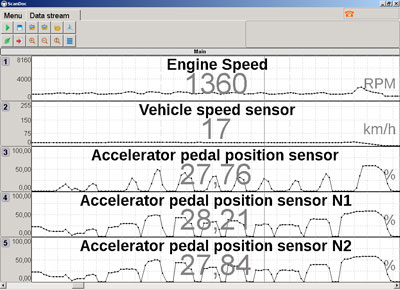
Figure 1 is a screenshot taken while the failure is not present.
- APP sensor N1 is at 28.21%
- APP sensor N2 is at 27.84%
- APP sensor is at 27.76%.
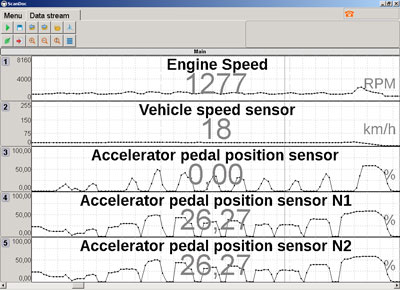
The ECU, however, intermittently calculates the actual pedal position as 0% as seen in Figure 2.
At this time it is unclear why after several seconds the ECU will sometimes set the pedal position to 0% and sometimes to the actual value as seen by APP N1 and N2.
Perhaps there is some kind of interference on the signals from N1 and N2?
To test this hypothesis, a USB Autoscope IV was connected to the pedal position sensor signals N1, N2 at the ECU connector. During a test drive, the problem manifested itself while a waveform was being recorded.
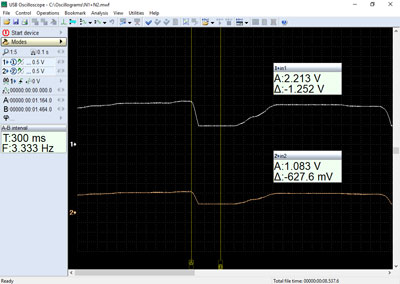
The resulting waveform is shown in Figure 3. On the waveform it is clearly seen that the signals from the APP sensors N1, N2 have no noise or interference. The voltages have the expected spacing during all operating conditions.
Since the oscilloscope was connected to the ECU connector and the signals were clean, it can be concluded that the sensors and the wiring are OK. That being the case, an internal ECU problem or another external problem must be interfering with the processing of the APP data, causing actual throttle position to be intermittently set to 0%.
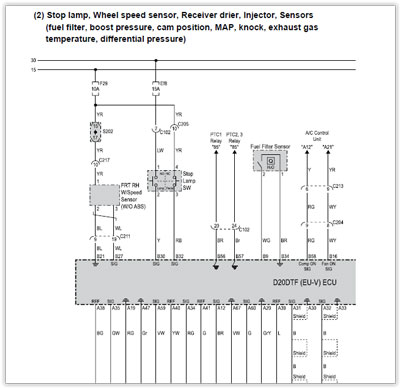
Studying the wiring diagram in Figure 4, it was decided that possibly the stop lamp switch or circuit could affect the throttle operation.
The stop lamp switch was tested and determined to operate as intended. However, when the brake pedal was pressed, the park lamps also illuminated along with the stop lamp. The opposite was also true; when turning on the park lamps, the stop lamp also illuminated. The reason for the errant behavior was a cross-short circuit inside the combination tail/stop lamp between the two filaments. When the taillights were “on,” the ECU would receive a “brakes applied” signal and would assume the signal from the APP N1 and N2 were erroneous since you don’t normally depress the accelerator and the brake pedal at the same time. The ECU would then set DTC P0121 and go into a fail-safe mode, limiting throttle valve opening.
No other problems were found and replacing the combination tail/stop bulb resolved the problem. Small problems can sometimes be very difficult to diagnose!





